History of the Department of Entomology
1899-1999
1900’s
 In 1899 a Legislative Act authorized the employment of an “expert entomologist” by the Agricultural and Mechanical College of Texas, resulting in the establishment of the Department of Entomology. Frederick W. Mally was hired that year to establish a department and devise controls for insect pests, especially the boll weevil. During the period 1899-1902, Mally established teaching and research programs in entomology.
In 1899 a Legislative Act authorized the employment of an “expert entomologist” by the Agricultural and Mechanical College of Texas, resulting in the establishment of the Department of Entomology. Frederick W. Mally was hired that year to establish a department and devise controls for insect pests, especially the boll weevil. During the period 1899-1902, Mally established teaching and research programs in entomology.
In 1901 the State Legislature appropriated funds for establishment of an apiary at Texas A&M for teaching and research on honey bees. E. Dwight Sanderson succeeded Mally as department head in 1902 and greatly expanded research and teaching activities in the department.
In 1904 there were three entomologists in the department: E. D. Sanderson, A. F. Conradi, and Louis Scholl. Three undergraduate level courses in economic entomology were offered, along with a course in apiculture and an advanced course in economic entomology. This number increased to eleven in 1907.
1910’s

Wilmon Newell became head of the academic Department of Entomology as well as of the Division of Entomology in the Texas Agricultural Experiment Station (TAES) in 1910. Newell resigned in 1915, and his responsibilities were divided between Floyd B. Paddock as Chief of the Division of Entomology and Sherman W. Bilsing as Head of the Department of Entomology.
Sherman W. Bilsing joined the department in teaching in 1913. He initiated a strong instructional program and was responsible for increasing the number of courses and improving the curriculum in entomology. Bilsing was responsible for initiating what has continued to be a strong academic program in entomology. He served as head of the department during the period 1915-1947, overcoming great obstacles to further development along the way.

In 1917 Ivan Shiller, a student in the department, discovered the first pink bollworm in the United States at Hearne, Texas, while working on a summer job with the USDA. The occurrence of this pest in Texas had a large impact on the direction of cotton insect research in the state and, to a degree, on the further development of the department. The decade of 1910-1020 closed with the programs of teaching and research well-established.
1920’s

In 1923 the department was moved temporarily to the Mechanical Engineering building. An apicultural research laboratory was established at San Antonio, staffed by Harris B. Parks and A. H. Alex.
In 1927 a new unit, the Division of Apiculture, was established to administer and conduct research in apiculture. Frank L. Thomas accepted the position of Chief of the Division of Entomology as well as that of State Entomologist. Thomas built a TAES research program in entomology and remained in charge until the reorganization of entomology in 1947.
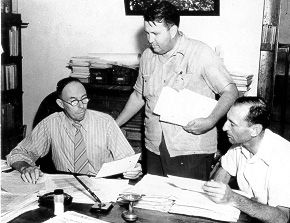
During the 1920’s the cotton fleahopper caused considerable damage throughout Texas, resulting in a substantial appropriation by the Texas State Legislature for research and control of this pest. These funds allowed for the employment of additional entomologists.
The pink bollworm threat to cotton production during this period resulted in cooperative research efforts between TAES and USDA. A joint laboratory was established at Presidio, Texas, to study this pest.
Of considerable importance during the 1920’s was the first stationing of entomologists at off-campus research stations. The first entomologist to be stationed off-campus was Edward Hobbs, who spent one year at the Weslaco substation working with citrus pests.
1930’s
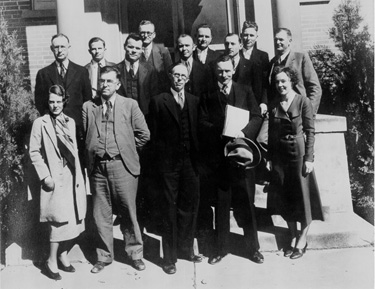
The depression of the early 1930’s took its toll on the department. Teaching and research were continued to the extent possible, although funds for these programs were reduced and faculty and staff suffered pay cuts. The administration of the department remained on solid ground. Sherman Bilsing was well-established as Department Head and Frank L. Thomas was beginning his second decade as Chief of the Division of Entomology.
New teaching faculty were added during the 1930’s, including James Sikes in 1937, Dial Martin in 1939, and Manning Price in 1940.
The entomology research laboratories at this time were located on campus in the area now occupied by the Texas A&M President’s residence. Research continued through the decade of the 1930’s. The major cotton pests—boll weevils, bollworms, pink bollworms, and fleahoppers—were the main targets of research on life histories and control.
1940’s

The 1940’s were years of considerable change for entomology at Texas A&M. The events surrounding World War II obviously had a great impact on the momentum being developed in the previous decade. Because of Texas A&M’s military status and all-male student body, the junior and senior classes were severely depleted. The young faculty members and TAES staff entered the military, leaving only a small core of teachers and researchers to maintain programs to the best of their ability.
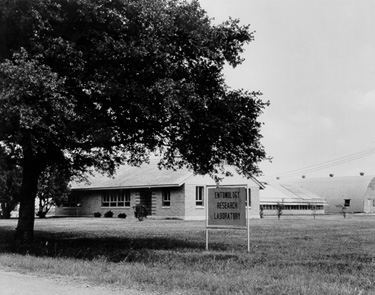
The most marked change that occurred during the 1940’s, however, was the reorganization of the various services within the entomology department. This had momentous effect on the people and programs in entomology, especially since several faculty and staff were just returning for military service and were re-starting their programs. Previously, there had been the Department of Entomology responsible primarily for teaching, the Division of Entomology responsible for research and regulatory work, and the Division of Apiculture responsible for research on honey bees. In an overall reorganization of agriculture at Texas A&M, these three units were consolidated under one administrative head. In 1947 Horace G. Johnston was appointed head of the consolidated units, to be known as the Department of Entomology.

At the time of the consolidation, the campus department included nine faculty members with joint teaching and research duties, one full-time teacher, four full-time researchers, and one extension agent. W.L. Owen, Jr. was assigned to the Lubbock, Texas substation in 1947 as its first TAES entomologist.
Other developments during the 1940’s included:
- The appointment of an extension entomologist to work in a three-county area of the Lower Rio Grande Valley (1948)
- Initiation of a cooperative research program between USDA and TAES to study the control of the Rhodesgrass mealybug, resulting in successful biological control of the pest (1949).
1950’s
The 1950’s began with the teaching and research activities of the Department being moved into the just-completed Biological Sciences building on the center of campus. With the increase of both undergraduate and graduate students after World War II, the number of entomology courses offered increased, as did the number of graduates.
The addition of previously 100% TAES research personnel to a joint appointment with teaching increased the number and diversity of instructors that allowed the development of an expanded graduate program. The development of chlorinated and organophosphate insecticides during the war and their initial effectiveness against many pests fostered a post-war dependency upon those chemicals that greatly affected the direction of the department during the 1950’s.

A new era of entomology was beginning. Members of the department became heavily involved in the use of chemicals for insect control. So many new pesticides were being introduced that much of the entomologist’s time was required simply to test these new materials. Although there were warnings about the overuse of pesticides and damage to the environment, they were considered to be of minimal importance to the entomological community. It was not until the public became aroused about environmental effects of pesticides and resistance began to develop in insects that views began to change about chemical usage.
The boll weevil became resistant to some chlorinated hydrocarbon insecticides in many states, including Texas, by 1956. By the 1960’s many species had developed resistance to insecticides. New approaches to insect control were beginning to be proposed and the department became involved in this research.
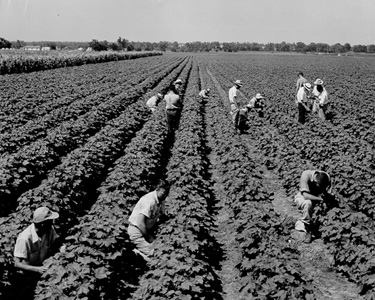
Several new faculty members were added to the department during the 1950’s. At the beginning of this period, cotton entomology received a great deal of attention. R.L. Hanna joined the faculty in 1949 to teach and conduct field research on cotton insects. W.J. Mistric was also added to the TAES staff in 1950 to work on cotton insects. Others added to study cotton insects included W.J. Magee, J.K. Walker, Jr., P.L. Adkisson, and J.R. Brazzel. By 1952 the pink bollworm had spread to most cotton-growing counties in Texas and caused an estimated $28 million damage to cotton in 38 South Texas counties.
Perry L. Adkisson succeeded W.J. Magee in 1958 and immediately began a research program on the pink bollworm. By 1962 a highly successful chemical/cultural control program was developed that prevented economic damage by this pest.
The end of the 1950’s marked a realization within the department that basic and applied research was essential for a forward-looking entomological program in the department. Diversity in research and teaching programs was also recognized. Areas such as toxicology, physiology, and ecology were strengthened. Several new faculty members were also added to the department during the 1950’s. (top of page)
1960’s
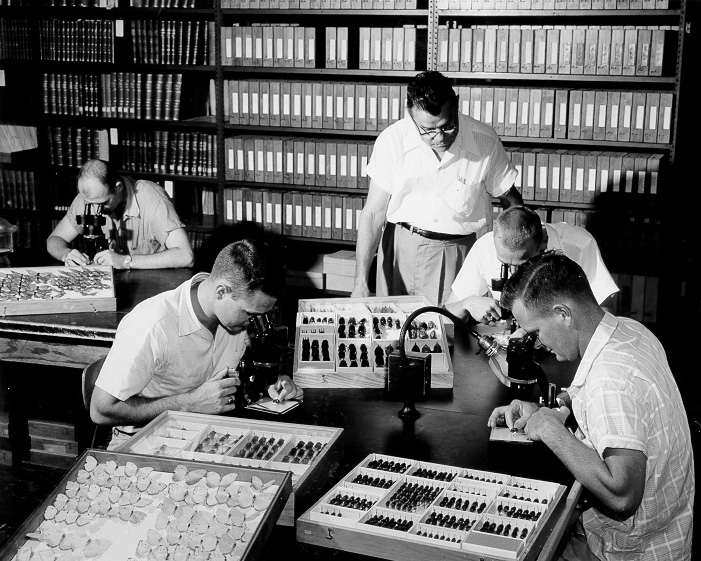
The heavy reliance on insecticides for insect control during the 1950’s resulted in environmental and insect resistance problems during the 1960’s. Entomologists were beginning to recognize that other approaches to controlling insects must be considered. Rachel Carson’s Silent Spring, published in 1962, aroused public concern about he dangers of overuse and misuse of pesticides.
By the beginning of the 1960’s, much of the research in the department was being geared to finding alternative solutions to insect control. An insect toxicologist was hired in 1963, primarily to conduct research on resistance of insects to pesticides.
Later in the decade, department members became increasingly involved in what was to become known as Integrated Pest Management (IPM). Perry L. Adkisson, who was appointed as head of the department in 1967, became a member of the FAQ Panel of Experts on Integrated Pest Control in 1968. This was the beginning of departmental involvement in IPM on a state, national, and international level, an action that resulted in departmental members assuming a prominent role in the development and application of IPM methods.
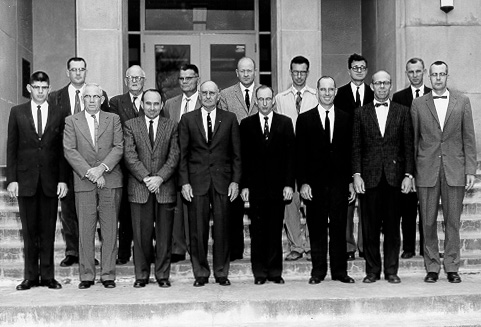
By 1967 the tobacco budworm had developed resistance to organophosphate insecticides after being previously resistant to chlorinated hydrocarbons.
Increased enrollments of both undergraduate and graduate students in entomology required additional instructors and more diverse coverage of subject matter areas. To handle these increased teaching and research needs, several new faculty members were hired in the mid- to late-1960’s. Forest entomology became a research and teaching area in the department for the first time. Faculty trained specifically in physiology and toxicology were appointed. The area of veterinary/medical entomology was bolstered by the addition of a faculty member responsible for teaching and research.
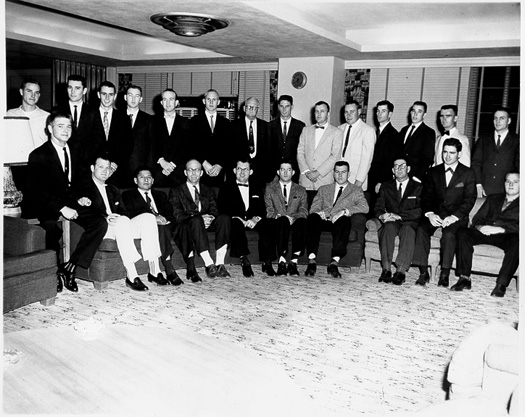
Losses of longtime faculty members also occurred: H.J. Reinhard retired in 1960, V.A. Little retired in 1964, and W.L. Owen at the Lubbock substation retired in 1966. Also, research on honey bees was lost due to the resignation of Nevin Weaver in 1965.
New on-campus faculty added during the 1960s were:
- H.W. Dorough (1963)
- J.C. Schaffner (1963)
- H.W. VanCleave (1964)
- N.H. Anderson (1964)
- L.L. Keeley (1966)
- D.P. Sanders (1967)
- W.L. Sterling (1967)
- F.L. Plapp, Jr. (1969)
- S.B. Vinson (1969)
- T.L. Payne (1969)
D.A. Wolfenbarger and J.A. Harding were added to the Weslaco substation in 1961 and 1969, respectively.
1970’s

The 1970’s can properly be called the “Integrated Pest Management” decade in the history of the department. It was during this decade that integrated methods of control were developed and implemented; members of the department played a large role in this process.
The Huffaker Project, covering five major crops and pine forests, was the first agricultural research project to involve intensive use of computer technology and systems analysis to build models of crop ecosystems. Perry L. Adkisson was sub-director for the cotton component and several other members of the department were also involved. This project covered the period 1972-1978.
After the Huffaker project terminated, the Consortium of Integrated Pest Management (CIPM) was initiated to continue this work and involved other crop protection disciplines. CIPM was designed to provide ecologically oriented systems of management to hold pest levels below crop damaging levels. Adkisson was also heavily involved in the initiation and operation of CIPM. Ray E. Frisbie became Project Manager for the program. The Huffaker Project and CIPM were instrumental in greatly reducing pesticide usage on several crops. The involvement of TAMU entomologists in these projects during the 1970’s is a bright chapter in the history of the department.

Another significant change that took place in the department during the 1970’s was the addition of a large number of faculty, both on- and off-campus. Fourteen new faculty members were added to the department at College Station during this decade, twelve of whom remain today. Of equal importance was the addition of 10 TAES faculty at off-campus localities. The development of IPM with its requirement for well-trained entomologists with diverse specialties played a role in this increase in new faculty.
Along with the increase in personnel, there was a broadening of programs within the department. Urban entomology and biological control were added as research and teaching areas. The development of the department’s molecular biology program also occurred during the late 1970’s. Medical and veterinary entomology was expanded and strengthened, as was forest entomology. Considerable research was conducted on the fire ant in the 1970’s.
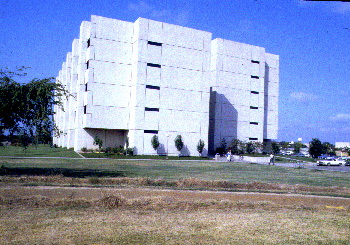
Along with the increase in research activities came expanded teaching programs and large increases in enrollment in entomology, especially the graduate area. The number of graduate students increased from 57 at the beginning of the 1970’s to nearly 100 by the end of the decade. This increase may be attributed to the addition of a diversified faculty whose interests appealed to a large number of students. New courses were added, including aquatic entomology, invertebrate pathology, acarology, and biological control.
The Department of Entomology occupied the new Minnie Belle Heep Building on the West Campus in 1977. For the first time, the department had its own teaching and research facility.
Adkisson was promoted to Vice President for Agriculture and Renewable Resources in 1978. Jimmy K. Olson served as interim head of the department until Fowden G. Maxwell was appointed as head in 1979.
1980’s
By the beginning of the 1980’s, the department had developed a large and diverse IPM program statewide. The department had grown rapidly throughout the 1970’s, and its IPM programs were well-known. Although these activities were extensive, there was need for basic research in several areas to bolster the applied programs.
A departmental review in 1979 identified several areas of specialization that were necessary for enhancement of both research and teaching capabilities (biological control, biosystematics, systems and computer sciences, toxicology, physiology, pathology, and molecular biology). These areas of need were included in a departmental strategic plan.
Fowden G. Maxwell was department head during the decade of the 1980’s; early during his regime, he began work to implement the strategic plan. Biological control was selected as the first of the areas in need of strengthening. Planning was initiated and approval was obtained for construction of a biological control laboratory and quarantine facility. Construction was completed on this facility in 1984. This provided the department with modern research and quarantine laboratories to house an expanded biological control program that served both on- and off-campus researchers. Justification was also developed for the employment of Robert A. Wharton and James B. Woolley, specialists in the systematics of parasitic Hymenoptera, to bolster teaching and research in the biological control effort as well as the departmental systematics program.
The Huffaker and CIPM projects provided funding during the 1970’s and early 1980’s for insect/plant modeling efforts, but when these projects terminated it was necessary to develop internal support to continue these activities. Because of the modeling and systems expertise that the department had developed in the CIPM and Southern Pine Beetle Programs, it was possible to convince the University and TAES to support the purchase of computer hardware and to add faculty and staff in these areas. Research and teaching in population ecology were also needed, and the department hired N.D. Stone in 1985 to develop a program in this area. Shortly thereafter, funds were obtained to establish the Knowledge Engineering Laboratory (KEL) in the department. Systems analysts and knowledge engineers were added to the staff. KEL linked faculty and staff in the department to other departments within the College of Agriculture and Life Sciences and the College of Engineering. COTFLEX, an expert system model simulating cotton production and marketing, was one of the earliest efforts of KEL. This was the first major effort dealing with a holistic crop production system and opened the door for funding and development of the expert systems TAMBETTLE and RICEFLEX.
Lloyd T. Wilson replaced Stone in 1989 and broadened the mission of KEL into crop production systems, including those of cotton and rice. Robert A. Coulson has been involved in the department of Knowledge Based Systems in Forestry Management and Intelligent Geographical Systems. Although not part of the KEL activities, Winfield L. Sterling and A.W. Harstack developed the complementary TEXCIM model that focused on dynamically linking the cotton plant with herbivore, predator, and control costs and other economic components of cotton production.
By the end of the 1980’s, the specialized fields of insect physiology, pathology and toxicology were well established. Research was being conducted on insect hormones (peptides), microbiology and cellular biology, genetics, and parasitoid-host plant relationships. The three principal areas of study involved the development of the baculovirus vector by the research group of Max D. Summers, the insect neurohormone research and peptide identification laboratory headed by Larry L. Keeley, and the parasitoid-host plant and basic fire ant studies conducted by S.B. Vinson and colleagues. In 1988 the Center for Advanced Molecular Studies (cAIMS) (under the direction of Max D. Summers), and the Laboratory of Insect Neuroendocrine Research (LINR) (under direction of Larry L. Keeley) were established. Genetics research was being conducted on insecticide resistance by F.W. Plapp, Jr. and fire ants by J.S. Johnston. These programs added several new faculty and staff members to the Department. By the 1990’s the Department had added two molecular biologists, a geneticist, and a chemist to the faculty, in addition to continuing and expanded the Research Scientist position in a number of areas.
During the 1980’s an endowment was completed to establish a Chair of Urban Entomology. Roger E. Gold was recruited to fill this position.
Other established programs in IPM, biosystematics, biological control, and medical and veterinary entomology continued during the 1980’s. Eight new on-campus and seven new off-campus faculty were added to the Department during the 1980’s, some as replacement faculty, and some to fill new positions. The teaching program was revised to account for the rapid changes that were taking place in entomology during this time. It was necessary to add new courses in systematics, ecology, and biological control and to considerably revise and strengthen existing ones.
New on-campus faculty:
- R.E. Gold (1989)
- L.A. Guarino (1983)
- D.L. Jarvis Jr. (1987)
- J.S. Johnston (1986)
- N.D Stone (1985)
- R.A. Wharton (1981)
- L.T. Wilson (1989)
- J.B. Woolley (1983)
New off-campus faculty:
- H. Browning (1981) at Weslaco
- J.V. Edelson (1982) at Weslaco
- K.J.R. Johnson (1980) at Weslaco
- R.L. Meagher (1989) at Weslaco
- F.L. Mitchell (1984) at Stephenville(top of page)
1990’s
Ray E. Frisbie was appointed as Head of the Department in 1993, succeeding Fowden W. Maxwell who had held the position since 1979. The decade of the 1990’s has proven to be one of considerable change in the entomological field. New technologies opened many opportunities for research and solutions to insect problems. There was a call for renewed dedication to teaching, particularly at the undergraduate level. The dawning of the Information Age placed extra pressure on extension entomologists whose responsibility it was to transfer the ever increasing technology to the user community. A myriad of new insect problems plagued farmers, ranchers and homeowners during the 1990’s and, as usual, the Department of Entomology was called upon to provide relief. In addition to the many existing pests in Texas, newly introduced ones were causing great concern, for example, the Africanized honey bee, the Formosan termite, and the citrus leaf miner. Fortunately, the Department was well positioned to meet these challenges. Its members had always been service-oriented, and teaching both undergraduate and graduate students was well recognized as a responsibility. The development of research programs in molecular biology, physiology, genetics, toxicology, and systems science during the 1980’s positioned the Department to take advantage of the opportunities these areas offered in the 1990’s. Effective IPM programs with an undergirding of extension expertise have always been strengths of the Department.
Administrative changes were made to cope with the extent and complexity of the Department’s integrated responsibilities. Associate head for academic programs (Pete D. Teel) and extension entomology (Pat Morrison) were established as was the position of assistant head for graduate programs ( Jim B. Woolley). A new IPM Coordinator (Tom Fuchs) was also appointed.
A reassessment of teaching activities was conducted during the decade to improve instructional programs at both the undergraduate and graduate levels and promote increased enrollment in the Department. As a result of these studies, the faculty initiated a plan that expanded teaching by entomology faculty into other departments, particularly in the Department of Biochemistry and Biophysics; increased awareness of entomology classes to students in other majors through an aggressive outreach program; and began a general course targeted at nonmajors entitled “Insects and Human Society” that sought broad enrollment across the campus. These efforts resulted in increasing the number of students enrolling in entomology courses and contributed to overall viability of the teaching program. By networking across the university, overall class enrollments increased substantially. The number of undergraduate entomology majors plus students double majoring increased from 36 in 1993 to about 80 in 1998. New courses in forensic entomology and science teacher education are now being taught.
Several new research and extension projects were initiated during the 1990’s. A significant legislative appropriation funded the establishment of the Texas Imported Fire Ant Research and Management Project. A consortium of Texas universities and agencies participate in this project (Texas Agricultural Experiment Station, Texas Agricultural Extension Service, Texas Department of Agriculture, Texas Tech University, and the University of Texas). The Department is involved with other legislative initiatives, including research on the eradication of the boll weevil, and a cooperative effort with West Texas A&M University to expand the Texas IPM Program in the Panhandle area. The Center for Urban and Structural Entomology was formed to coordinate research and extension efforts in this area of activity, and a cooperative effort between on-campus/off-campus extension and research faculty was initiated through the Biological Control Laboratory.
The faculty of the Department is truly statewide: 30 teaching/research/extension faculty located at College Station; 15 extension and 11 research faculty located at Texas A&M Research and Extension Centers; and 30 Extension Agents-IPM who are members of the Department. Faculty members added during the 1990’s include:
New on-campus faculty
- C. Coates (1998)
- J. Bernal (1997)
- J.D. Oswald (1995)
- P.V. Pietrantonio (1995)
- K.M. Heinz (1994)
New off-campus TAES
- T.X. Liu (1997) at Weslaco
- J. Legaspi (1995) at Weslaco
- J. Reinert (1994) transferred from Resident Director to research at Dallas
- D.G. Riley (1990) at Weslaco
New off-campus TAEX
- P. Porter (1998) at Lubbock
- D. Gouge (1997) at College Station
- M. Muegge (1997) at Fort Stockton
- N. Troxclair (1997) at Uvalde
- C. Sansone (1996) at San Angelo
Acknowledgements to Dr. Horace Burke, Professor, Department of Entomology, for contributing the written version of this history.(top of page)